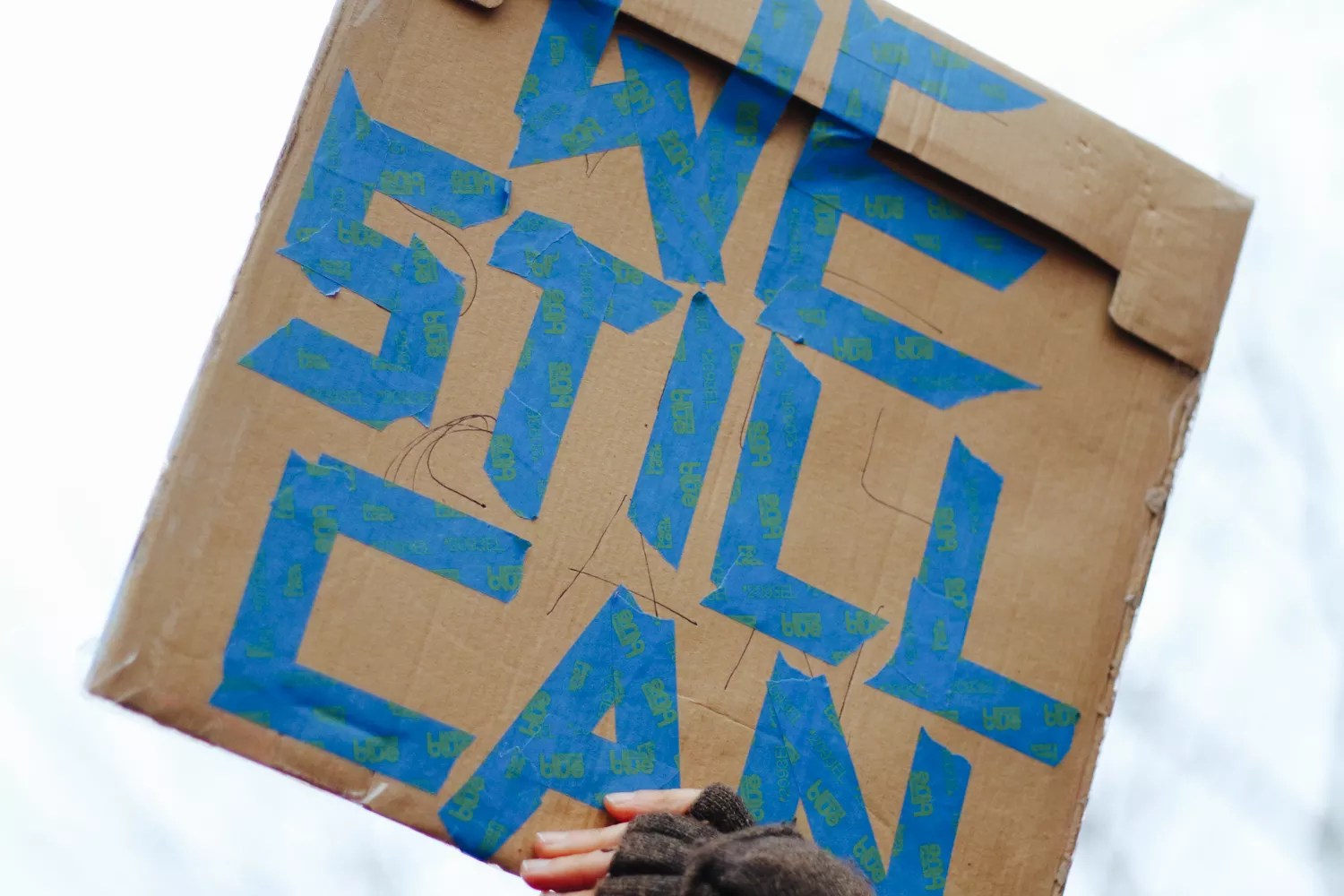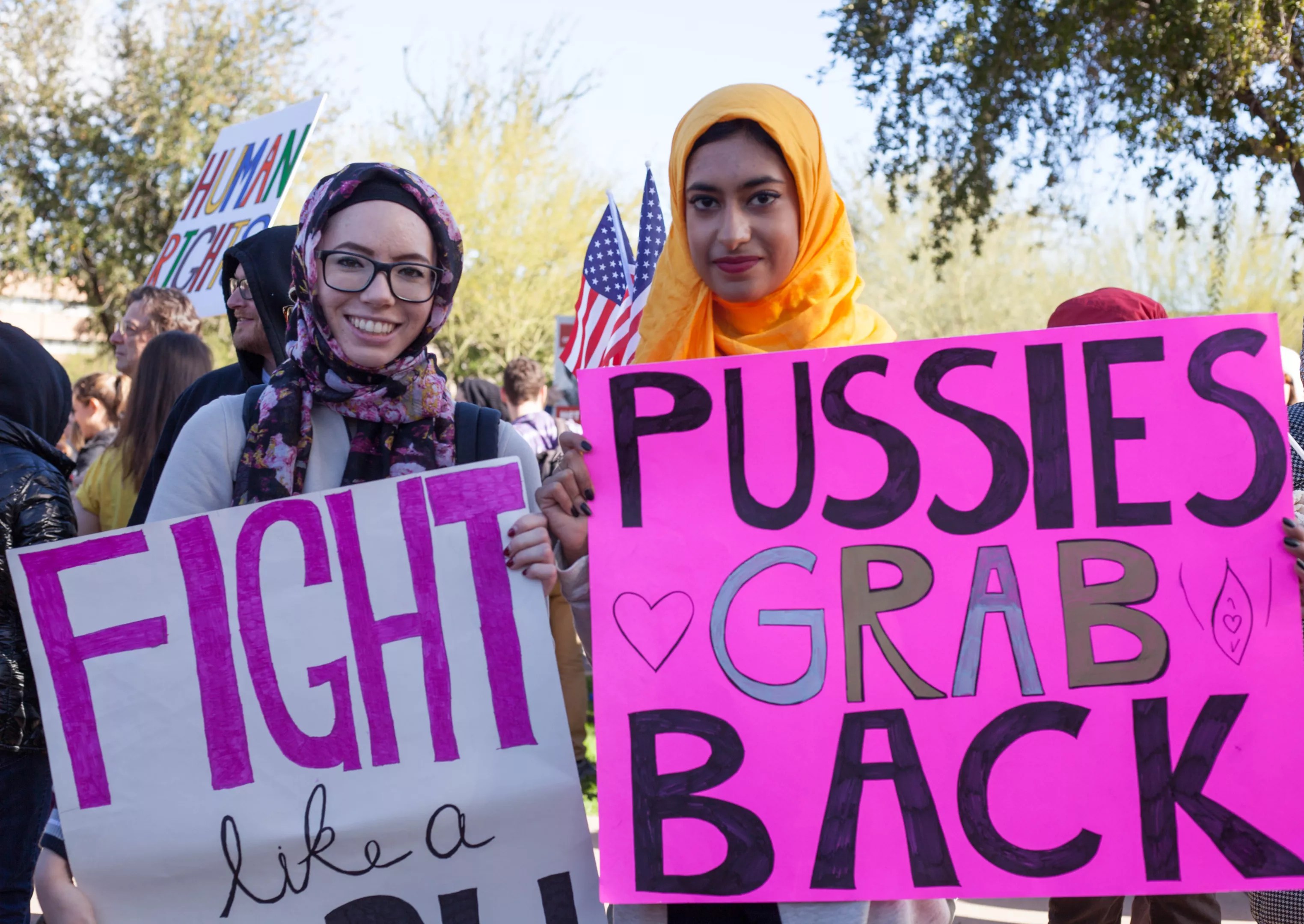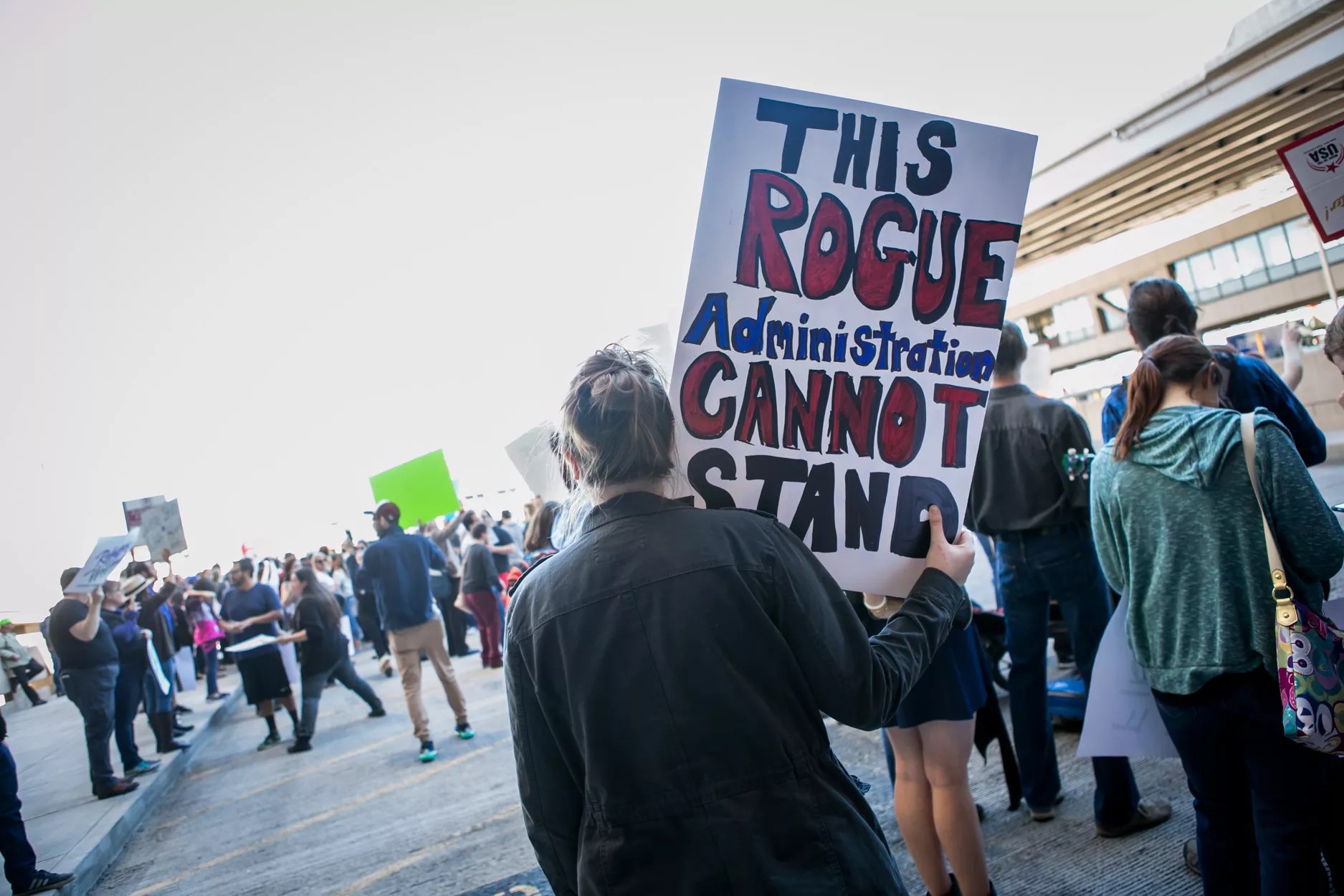
Evie Carpenter

Audio By Carbonatix
For those of us living in Arizona – a place many call a laboratory of anti-immigrant legislation – Trump’s executive actions are eerily reminiscent of life during the SB 1070 fiasco. There is widespread fear, confusion, calls to action, and steps for legal protection. But instead of our state of only 6 million-plus going through this together, now we are 320 million Americans.
Last week, during the first suite of President Donald Trump’s directives, my cellphone started flashing with calls and text messages. First, it was family, asking if I’d seen what the president had declared against immigrants, against Muslims, against the efforts of the Standing Rock water protectors. Then it was friends starting to offer help, and ask about organizations doing good work and where they could go protest and donate.
The moment reminded me of 2010, when then-Governor Jan Brewer signed SB 1070, a bill that allowed Arizona police agencies to ask for people’s immigration status based on “probable cause” (meaning potentially the color of our skin, the car we drove, or the neighborhood we lived in). It was a moment that defined our state’s history, our evolution as peoples of the Southwest, our understanding of what it means to be Arizonan.
As an organizer, I immediately tried to transform fear into rage, rage into action. Last weekend, as people took their rage to airports, I was reminded of how within hours of Brewer signing SB 1070, many rushed to the State Capitol to voice their anger, their fear, their willingness to help.
We Arizonans have a step up on the resistance movement. Here are seven things we learned from fighting SB 1070 that we can use going forward.

The protest was peaceful and full of passion.
Melissa Fossum
Have a Disciplined, Consistent Message
At the moment that SB 1070 became law, fear exploded. Many undocumented people were afraid of living a normal life, of simple tasks like going to work or going to the store. Schools reported high absenteeism all across the state, and crooks took advantage of the confusion and offered “legal protections” that didn’t exist. And while community organizations didn’t fully agree on every word of the messaging, there was a disciplined and focused message trying to address the fear many community members felt. It was simple, actionable, and easy to understand. Don’t overreact. Make sure you know your rights, which can protect you from deportation. Make a plan with your friends and loved ones in case you are detained. If you are a U.S. resident or citizen and you are a victim of racial profiling, report it, and help build a case against this law.

Mayra Alvarado (left) and Estrellita Alvarado protest at the Women’s March on Phoenix.
Maria Esquinca
Build Solidarity
One of the most powerful activities, that wasn’t always recognized as such, was to organize community forums, or “foros” as they are called. These events were led by organizations, lawyers, consulates, faith groups, and schools in every corner of the state. There were massive ones with more than 1,000 people, small ones at churches, meetings like Head Start, and ones at coffee shops and Zumba classes. But the power of these informational meetings was the opportunity for people to see others in the struggle, to feel kinship and community, and see that they too had power to inform others, to show up and raise their voice and share their story.
All Tactics Are Game
There was a lot of discussion of what was strategic and what wasn’t. There were long and painful meetings where ideas were discussed, marches, strikes, direct action, and vigils. All those protest activities actually happened. Some of them were more successful than others, but they all played a role in giving an opportunity to new people to get involved. All tactics had a role and an impact, and they should never be shunned as ineffective. All tactics are good tactics when we are trying to figure out our target.
Read on for more ways to resist Trump, inspired by protesting SB 1070.

Sarah Tahir (left) and Samantha Hill attend the Women’s March on Phoenix.
Maria Esquinca
Occupying a Physical Space
Within hours of Brewer signing SB 1070, almost 2,000 people occupied the grounds at the State Capitol. Within a week, it became 10,000 people chanting “Si Se Puede!” The Arizona State Capitol was the place for resistance. Even though the bill had been signed and the fight was going to the courts, the building became synonymous with an unfair government. It allowed for people to convene and support each other, and very often when wanting to know what was going on you, could just go down to the Capitol and connect with organizers, with the warriors praying, and even with young folks causing a ruckus. In the last days, we’ve seen people occupying airports to defy the Muslim ban, but there’s a need to identify new spaces (possibly municipalities) to offer sanctuary, legislative buildings to expand protections, or all of the above.

Opponents of the Dakota Access Pipeline took to the streets of Phoenix.
Miriam Wasser
Getting Legal Standing
When big policy announcements are made, it doesn’t only confuse those the law intends to affect, but also the enforcers. In the first days of SB 1070, municipalities across the state announced that they would not comply with the law. This allowed for a debate between the state and the various city governments. Other agencies, like Sheriff Arpaio’s, were happy to enforce the anti-immigration law, and saw it as an opportunity to openly target brown people and feed the deportation machine. Organizations like the ACLU, MALDEF, and others helped provide legal backing to cases of racial profiling and discriminatory practices against immigrant populations. While the cases took years to be resolved, it was ultimately a lawsuit that brought down most of SB 1070 at the Supreme Court.

Kenny Barrett, Margaree Bigler, and Josh Hahn hold up signs designed by street artist Shepard Fairey for the Women’s March on Phoenix. Fairey’s “We the People” designs feature Latina, Muslim, Native American, and African-American women.
Maria Esquinca
Economic Boycott
One of the most controversial, yet effective tactics against SB 1070 was the economic boycott led by Somos America (an immigrant-rights organization that attracted national attention by collaborating with the National Council of La Raza) and celebrities who refused to perform in the state. The economic boycott was so far-reaching that companies decided to stop their investments and expansion to Arizona, and the economic impact was so large that the business community got involved, becoming a majority that remained quiet through the most intense times of SB 1070. But they ultimately lobbied against anti-immigration legislation, and called on state leadership to change the course. Trump is a businessman, and his message continues to be about jobs. An economic boycott against the United States could have an impact in the pockets of the business sector, often the last to react.

The country has gone rogue.
Melissa Fossum
Recall the Architect
One of the most powerful accomplishments of the SB 1070 resistance was the recall of the leader of the anti-immigrant sentiment at the legislature, state Senator Russell Pearce. A group of outstanding organizers dreamed of the impossible, removing from office a sitting Senate President by collecting enough signatures, supporting a more moderate Republican to beat him in the primary, and running a special election that made him the first senator in the history of Arizona to be unseated. It finished his political career, and sent a message to the legislature with the power of political organizing. It’s only Trump’s second week, but people are already talking about impeachment. Is there a lesson to be learned from the organizers that took Pearce down?

Marchers took a lot of pride in their signs, conveying everything from angry to sardonic and sassy messages.
Evie Carpenter
A lot of organizing work happened during the fight against SB 1070, so I probably missed a thing or two. But what’s important is to realize that in Arizona we’ve fought a similar fight against tyrants that were blinded with power. While we have a lot of progress to make, we have actually made gains.
In the last few years, the Arizona Legislature has considered an array of crazy anti-immigrant bills that have died before making it to the governor’s desk. Impressive community leaders and organizations have sprung up all across the state electing pro-immigrant candidates and taking people like Arpaio out. Some of these young activists are now leading national efforts to stop deportations, divest from financial institutions preying on people, promoting reproductive rights of women, and sharing their art and activism with others. This new generation is connecting with issues outside of immigration, fighting for criminal justice reform, LGBT rights, the environment, and much more.
I still get overwhelmed by how fast Trump is moving. Some might say that this is a very different fight at a very different scale. But we shouldn’t forget: This is not the first time in recent history that people have come together to fight injustice. And now more than ever, it certainly can’t be the last. We will learn from the past. We will rise, just like Arizona has before, better and stronger.